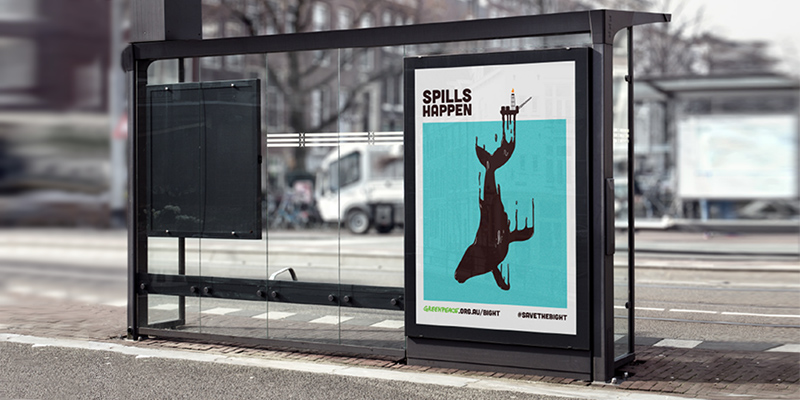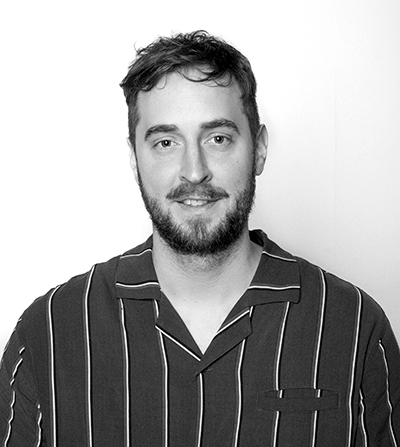Student design to feature in Greenpeace campaign
By Jesse Neill
 ART AND DESIGN UniSA Communication Design student Mike Wills will see his “Spills Happen” design brought to life as part of Greenpeace’s campaign against oil drilling in the Great Australian Bight.
ART AND DESIGN UniSA Communication Design student Mike Wills will see his “Spills Happen” design brought to life as part of Greenpeace’s campaign against oil drilling in the Great Australian Bight.Greenpeace will feature the artwork of a UniSA student in one of their upcoming campaigns against oil drilling in the Great Australian Bight.

Final-year Bachelor of Design (Communication Design) student Mike Wills has won the Greenpeace Design Challenge and will spend up to four weeks with the Greenpeace Asia Pacific Design Team in Sydney.
Mike was one of 75 final-year Design students from UniSA who developed creative approaches for Greenpeace as part of a real-world design project.
UniSA School of Art, Architecture and Design Lecturer Dr Doreen Donovan says students designed a range of campaigns tackling oil drilling in the Great Australian Bight and single use plastics; or promoting renewable energy.
“It enabled students to deepen their understanding of environmental issues and strengthen their creative skills by applying them to real-world projects and engaging with external stakeholders,” Dr Donovan says.
“In terms of benefits to Greenpeace, it is a unique opportunity to see how young creatives interpret issues they work with on a daily basis. Sometimes familiarity can be a hindrance to developing new approaches.”
UniSA staff shortlisted 16 of the students’ proposed designs for Greenpeace, which then selected three to include in their campaigns.
Greenpeace Asia Pacific Program Director Dom Rowe says students were selected through an extensive judging process involving experienced design and campaign professionals.
“We appointed a selection panel of senior experts in our organisation that specialised in plastics, renewable energy and the Bight, as well as social and traditional communications,” Rowe says.
“Each made comment on the entries around audience, tone, impact and usability. The winners were chosen by averaging out scores on these areas.”
The three winners of the design challenge – Mike Wills, Alisia Mayfield, and Lara Apollonio – will all have the opportunity to see their works transformed into a real Greenpeace campaign or shared on the organisation’s social media channels. Rowe says that the opportunity was mutually beneficial.
“When students work on projects with organisations like Greenpeace, they get to not only develop their skills but also become part of something bigger,” she says.
“At Greenpeace we love to tell stories in new and interesting ways. Doreen presented a wonderful opportunity to work with talented designers that could make our campaigns sing.”
Mike will work with Greenpeace’s communications team, digital campaigners, media experts and content creators specialising in audiovisual design to adapt his “Spills Happen” design so it can be used in a wider campaign. His design will be given a marketing budget and he will also be given the keys to Greenpeace's social media accounts to experiment with the campaign online.
Mike says he “wanted to go with a sympathetic approach to evoke an emotional response”.
“My original idea came from another designer, Mark Gowing, who made a similar oil mark of a bird,” he says. “It became the basis for my work, although I adapted it to communicate more specifically the problem at hand. It’s a simple outcome but it took probably a month and a half or so to get it to that point.”
Other Stories
- Researchers close to ‘cracking’ cure for peanut allergies
- Trump’s twisted tweets add to his popularity
- Parents stand strong as ‘pester-power’ loses its punch this Christmas
- Experience 2050 today at new MOD. exhibition
- From the Vice Chancellor
- Achievements and Announcements
- Antarctic ice sheets could be at greater risk of melting than thought
- Student design to feature in Greenpeace campaign
- UniSA delivers high-impact innovation for grain cropping in Australia
- Submariners to benefit from UniSA’s deft design research
- Fab four set to soar with New Colombo Plan scholarships
- The latest books from UniSA researchers
- Staff service awards and other key events
- Relive the Hawke Centre’s latest events




